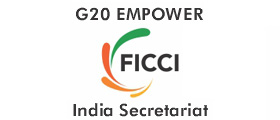-
The Skill India Mission covers short-term and long-term training, recognition of prior learning and entrepreneurship. The programme is aimed at improving participation in the formal labour force, focusing on skilling and upskilling of people, especially women. Close to 50% of the candidates enrolled and trained under this scheme are women. The long-term skill development training is done through Industrial Training Institutes (ITIs) that encourage women’s enrolment by introducing courses that are aligned to the industry. More than 400,000 women, till date, have been re-skilled and upskilled under the Recognition of Prior Learning (RPL) programme. Skill India also encourages the participation of women in jobs of the future such as Artificial Intelligence, 3D Printing, Data Analytics, Robotics, Drones etc.
Further, the National Apprenticeship Promotion Scheme, was launched in August 2016 by the Government of India to promote apprenticeship in industry through financial incentives, technology, and advocacy support. The National Skill Development Corporation (NSDC) is presently conducting a focused pilot programme with United Nations Development Programme (UNDP) and the Society of Development Alternatives (DA), to reach out and benefit more than 50,000 women in seven states/union territories, over a duration of 15 months. 61,842 women have received skill training between 2018-19 to 2021-22.
A separate apprenticeship programme named Prime Minister Skill Development Scheme (Pradhan Mantri Kaushal Vikas Yojana) aims to provide additional infrastructure for training and apprenticeship of women by introducing flexible training delivery mechanisms, flexible afternoon batches on local need-based training to accommodate women; while ensuring a safe and gender-responsive training environment, employment of women trainers, equity in remuneration, and complaint redressal mechanism. As of 2022, close to 4 million women have been certified which constitutes more than 40% of the total certified individuals. Crèche facilities are also available at these centres to encourage new mothers to attend the skill training programmes.
The Ministry of Skill and Development is also running Vocational Training Institute (Jan Shikshan Sansthan) programme to provide skill training to non-literate, neo-literate people with rudimentary level of education up to the 8th standard, and school dropouts up to the 12thstandard in the age group of 14-45 years. The programme prioritises female students too as the number of women, who have benefitted from this programme between 2018-22 is 8,00,269 (0.8 million approx.). There are around 233 skill training centres active under this programme across the country. The programme benefits around 400,000 people annually – of whom 85% are women.
The Government has also taken several initiatives under the Digital India programme for digital literacy of citizens, especially women and girls, aimed at closing the digital gender gap. Prime Minister Rural Digital Literacy Campaign (Pradhan Mantri Gramin Digital Saksharta Abhiyan) is an initiative specifically for marginalised women and girls, covering 6 crore (60 million approx.) households, to bridge the digital divide in rural areas. As of December 2022, the percentage of women, who benefited under this initiative is over 53% of total enrolled, over 54% of total trained and over 56% of total certified.
To improve leadership skills of grassroot women political leaders, the National Commission for Women (NCW) launched a pan-India capacity building programme, ‘She is a Changemaker’, for women representatives at all levels- gram panchayats (village councils) to parliament members and political workers, including office bearers of national/state political parties. The capacity-building programme in association with regional training institutes are making a sustained effort to train women to become political leaders and improve their decision making and communication skills, including speaking and writing skills.

